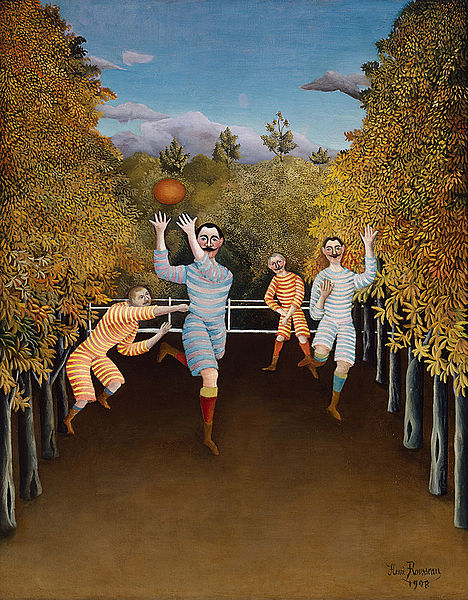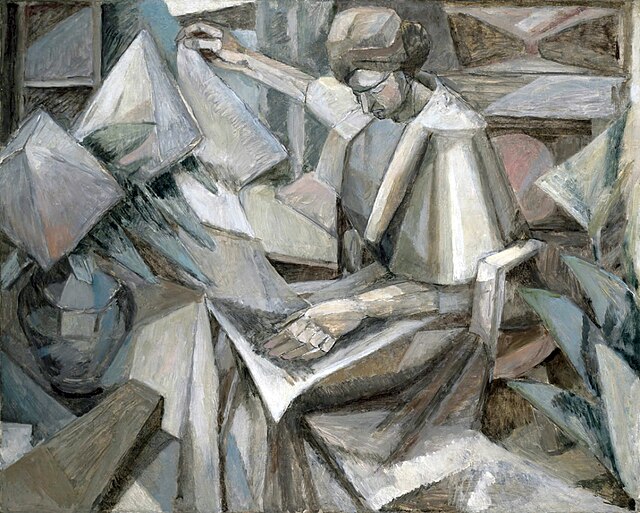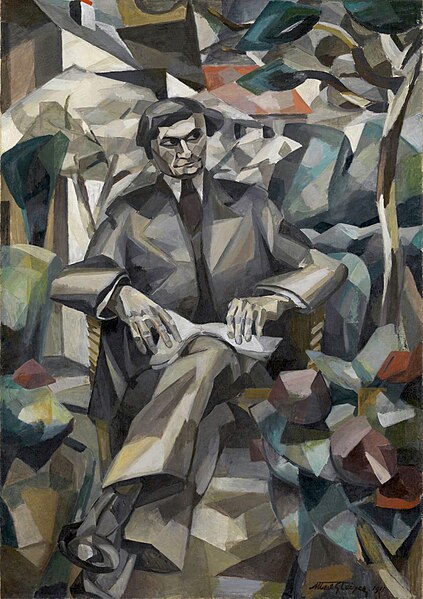Football Players is a 1912–13 painting by the French artist Albert Gleizes. The work was exhibited at the Salon des Indépendants, Paris, March–May 1913. September through December 1913 the painting was exhibited at Erster Deutscher Herbstsalon, Berlin. The work was featured at Galeries Dalmau in Barcelona, 29 November – 12 December 1916, Gleizes' first one-person show. The work was again exhibited at Galeries Dalmau 16 October – 6 November 1926. Stylistically Gleizes' Football Players exemplifies the principle of mobile perspective laid out in Du "Cubisme", written by himself and French painter Jean Metzinger. Guillaume Apollinaire wrote about Les Joueurs de football in an article titled "Le Salon des indépendants", published in L'Intransigeant, 18 March 1913, and again in "A travers le Salon des indépendants", published in Montjoie!, Numéro Spécial, 18 March 1913.
Football Players
Le Plein Air, Revue illustrée de tous les sports, 24 April 1913
Final of the Championnat de France of rugby football (1912) between Racing club de France and Stade toulousain – "a melée at the 22 meters of racing."
Henri Rousseau, 1908, The Football Players, oil on canvas, 100.5 × 80.3 cm, Solomon R. Guggenheim Museum
Albert Gleizes was a French artist, theoretician, philosopher, a self-proclaimed founder of Cubism and an influence on the School of Paris. Albert Gleizes and Jean Metzinger wrote the first major treatise on Cubism, Du "Cubisme", 1912. Gleizes was a founding member of the Section d'Or group of artists. He was also a member of Der Sturm, and his many theoretical writings were originally most appreciated in Germany, where especially at the Bauhaus his ideas were given thoughtful consideration. Gleizes spent four crucial years in New York, and played an important role in making America aware of modern art. He was a member of the Society of Independent Artists, founder of the Ernest-Renan Association, and both a founder and participant in the Abbaye de Créteil. Gleizes exhibited regularly at Léonce Rosenberg's Galerie de l’Effort Moderne in Paris; he was also a founder, organizer and director of Abstraction-Création. From the mid-1920s to the late 1930s much of his energy went into writing, e.g., La Peinture et ses lois, Vers une conscience plastique: La Forme et l’histoire and Homocentrisme.

Albert Gleizes, c. 1920
Albert Gleizes, 1909, Bords de la Marne, oil on canvas, 54 x 65 cm, Musée des Beaux Arts de Lyon
Albert Gleizes, 1910, La Femme aux Phlox (Woman with Phlox), oil on canvas, 81 x 100 cm, exhibited Armory Show, New York, 1913, Museum of Fine Arts, Houston
Albert Gleizes, 1911, Portrait de Jacques Nayral, oil on canvas, 161.9 x 114 cm, Tate Modern, London. This painting was reproduced in Fantasio: published 15 October 1911, for the occasion of the Salon d'Automne where it was exhibited the same year.








